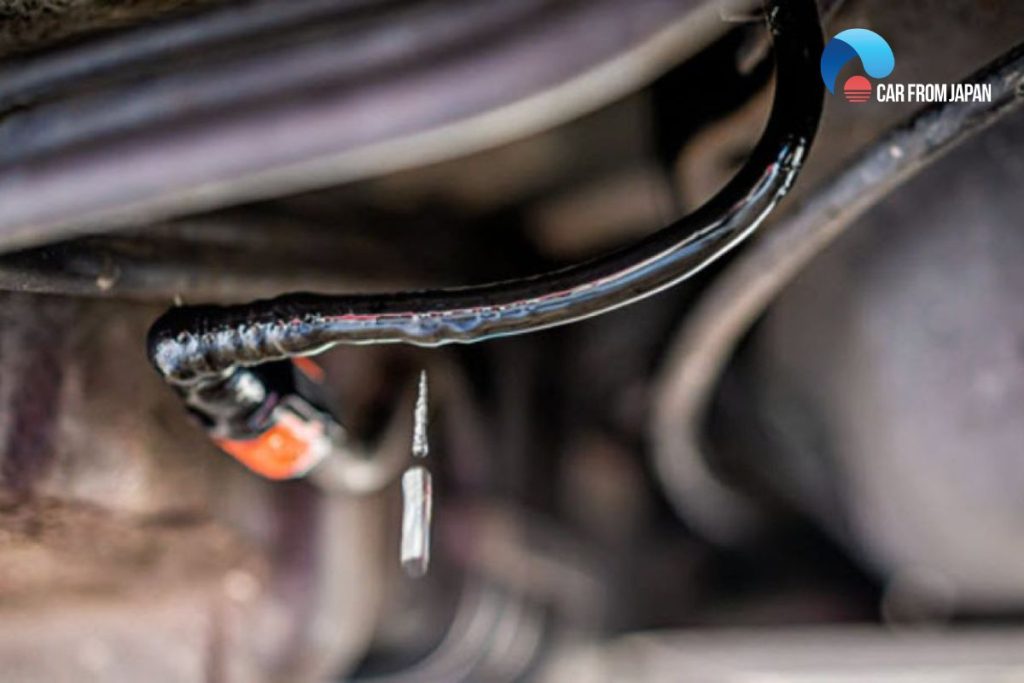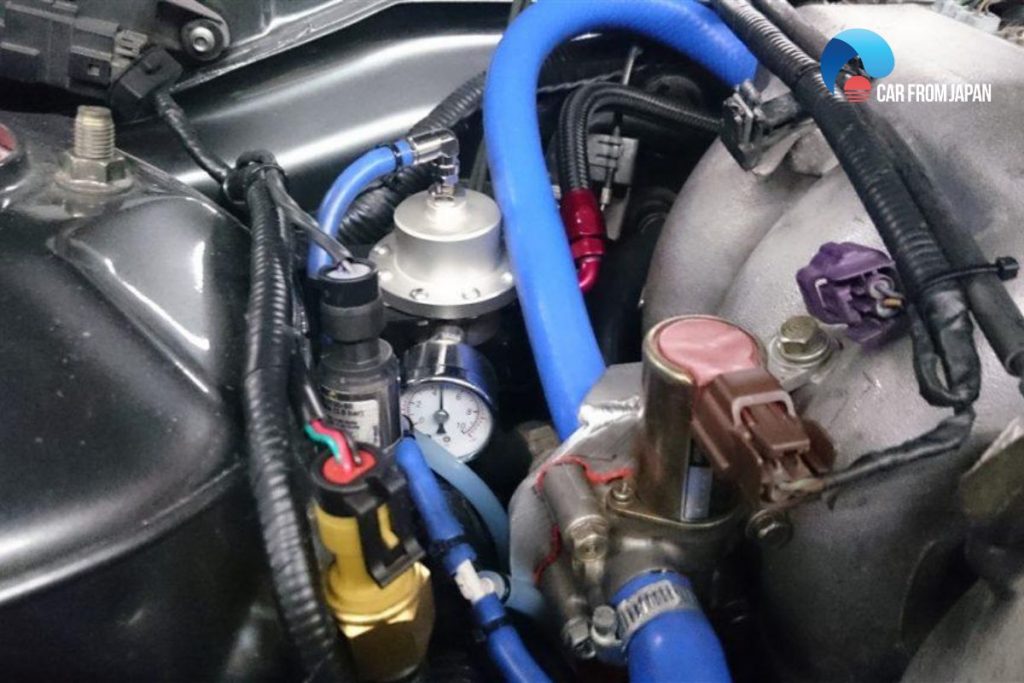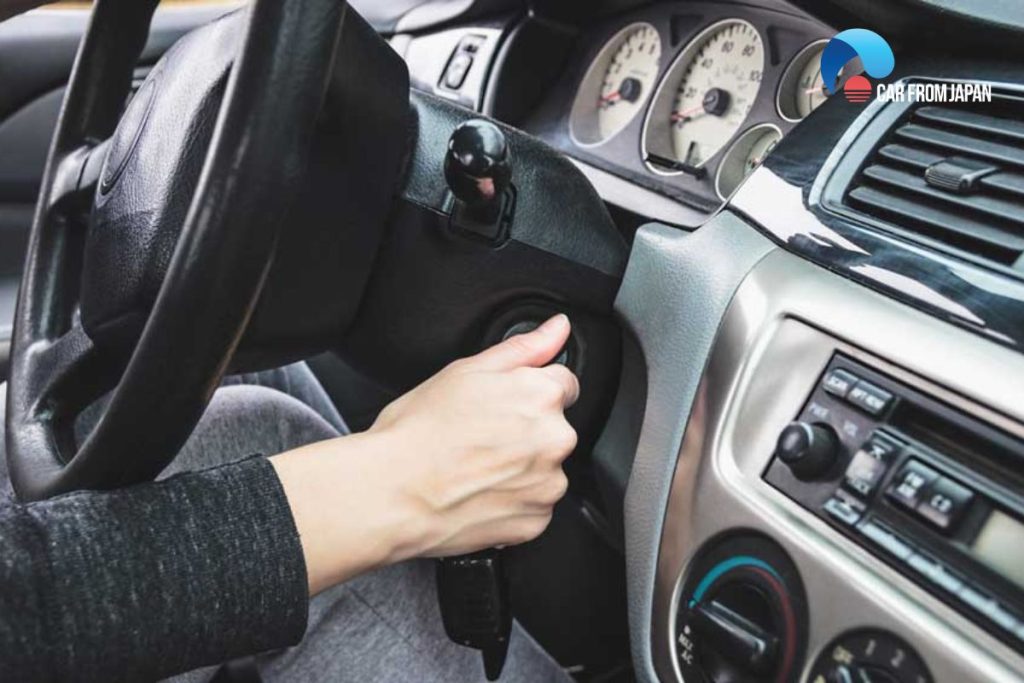If you are interested to know the symptoms of a bad fuel pressure regulator, keep on reading and learn from some of the insights we will be sharing.
You do not need to be a trained mechanic to tell if it is indeed the problem or if you have to keep on looking for the culprit!
Contents
- 10 Symptoms of a Bad Fuel Pressure Regulator
- What To Do If You Suspect A Bad Fuel Pressure Regulator?
- How To Prevent The Bad Fuel Regulator Symptoms?
- FAQs On Fuel Pressure Regulator
- Is it possible to run an engine without a fuel pressure regulator?
- Will a failed fuel pressure regulator throw a code?
- Does a bad fuel pressure regulator cause gas smell for cars?
- What if you unplug the fuel pressure sensor?
- How long does it take to fix a fuel pressure regulator?
- How much do you expect to pay for a bad fuel pressure regulator replacement?
- Final Words
10 Symptoms of a Bad Fuel Pressure Regulator
You are driving with your family, excited about the good times that lie ahead, when all of a sudden, your car stops! You try to start the engine, but nothing happens.
You start thinking of possible reasons. The list is endless. One of the possibilities, however, would be a bad fuel pressure regulator.
Reduced fuel efficiency
With the rising cost of fuel nowadays, you have to be wary of the things that can be the culprit for using more than what is necessary. Products such as the best 0w20 synthetic oil are sure to be promising.
If your fuel pressure regulator is already problematic, one thing that can happen is that it uses more fuel than its actual consumption.
There are other symptoms discussed in this post that can be attributed to the reasons why fuel is wasted, such as in the case of leaks.
Plus, the air and fuel mixture can also be incorrect, which is another reason for fuel inefficiency.
When the pressure regulator is performing poorly, this requires the engine to exert more effort for the vehicle to run. This means that more energy is required, which is consumed in the form of fuel.
You will have smaller miles per gallon, contributing to the increased cost of driving your vehicle in the long run.

Black smoke
If you are looking for faulty fuel pressure regulator symptoms, one thing that you have to watch out for would be the appearance of black smoke.
To be specific, you will notice this coming out of the exhaust pipe. If there is a leaking or internal damage in the regulator, this causes the emission of black smoke in the tailpipe.
When the fuel pressure regulator is problematic, the engine can run rich. Aside from using more fuel to produce the power needed for the car to run, another effect is the production of black smoke. Normally, the smoke that is emitted in the tailpipe is gray or white.
Otherwise, you have to check the fuel pressure regulator, although the problem could be with other components as well, such as bad carburetor settings, clogged air filters, and damaged injectors.
Leaking fuel
Why is your car using more fuel compared to its previous consumption? Probably, it is because there is a leak. What is the reason behind the leak?
Many things can be looked into, such as faulty seals, rust, issues with electrical connections, filters, contaminants, and of course, a bad fuel pressure regulator.
The fuel pressure regulator comes with seals on the side. When these seals are damaged, perhaps due to excessive wear or long-term use, the fuel will end up leaking.
With the continuous leak of the fuel, the performance of the engine can be decreased while the gas consumption will ultimately increase.
Make sure to pay attention to this problem among symptoms as soon as possible since it can be a significant safety risk.

Weak acceleration
This is one of the most common concerns among people who are experiencing a faulty fuel regulator.
Step on the gas pedal. If you notice that the car is not moving any faster despite the pressure that your foot exerts on the accelerator, take this as one of the most-worth-notice symptoms.
This is a result of the inability of the engine to achieve the perfect balance between air and fuel.
More than the regulator, the injector can also be a problem when the engine does not accelerate properly. The buildup of dirt on the tips of the injectors will most likely compromise the engine.
Look for the best fuel injector cleaner to resolve this issue, even without the need to work with a trained mechanic.
Problems when decelerating
A faulty fuel pressure regulator does not only cause a problem when you are accelerating but also when you are decelerating.
This is because excessive gasoline can build up. The engine can backfire, and it will take quite a while before you can notice a reduction in your speed.
As usual, this is another problem that needs to be given immediate attention. It is difficult if you will find it hard to adjust speed, especially when you are running fast. Watch your speed all the time for a safe driving experience.

See More: How to Detect Bad MAP Sensor Symptoms
Engine misfire
A misfiring engine can be mysterious and frustrating. This fuel pressure regulator symptom can vary depending on the vehicle that you drive and the specific source of the problem.
It could be because of the ignition system, a problem with the manifold gasket, damages in the vacuum lines, and a bad fuel regulator.
The engine will run rough and end up misfiring when the fuel pressure regulator is problematic. When you idle the engine, it will not run smoothly when the regulator is defective. This is because the performance of the engine is disturbed.
The air-fuel ratio of the engine will be affected, as well as the tune. This is going to have a significant effect on the overall performance of your vehicle. When the engine is misfiring, your car will not maximize its performance.
Engine does not start
More than just the engine misfire, the engine will also most probably not start when the fuel pressure regulator is bad.
Regardless of how many times you start the engine, it won’t turn on. This is one of the most frustrating situations that can confront any driver, especially when you are in a hurry.
One of the main responsibilities of fuel pressure is to make sure that the right level of pressure is maintained, even when the engine is not running. In some cases, you might need to restart up to five times before the engine is fired.
However, when the problem with the regulator is extreme, regardless of how many times you try, the engine won’t start at all. It might crank, but it is not going to start.

Blackened spark plugs
While spark plugs may be small, they play an important role in the performance of your car. If your car is demonstrating lesser punk, you might want to look at the spark plug as this could possibly be the culprit.
If there is a black and feather-like deposit, it is a possible indication of the wrong fuel mix or wear. Problems include leaky injector, heavy carburetor float, and faulty fuel pressure sensor.
To be sure if the problem is with the spark plug, remove it. Look for any indication of soot. When it is already black, this can also be the reason why your engine is misfiring.
Black smoke can also appear from the tailpipe. Replace it immediately to avoid the problems from being worse.
Noisy fuel pump
When you are driving your car, it is normal for the fuel pump to make a sound. However, there are some instances when it can be annoying.
If the whirring noise is already bothering you, it is time to check some of the components of the engine. One part that should never be missed is the fuel pressure regulator.
The pump will often make a noticeable noise when the engine starts or when you try to accelerate your speed.

Again, this can be normal! But if the noise is too loud compared to the normal, check if there is a problem with the fuel pressure regulator, among other parts.
Gasoline in the vacuum hose
Still wondering about the bad fuel pressure regulator symptoms? One last thing that you have to check is the vacuum hose. Look for the possible presence of gasoline.
The vacuum hose is attached directly to the fuel pressure regulator. You have to detach it first to spot the possible presence of gasoline.
Aside from having gas in the vacuum hose, another indication of damage in the fuel pressure regulator is the dripping of fuel on the hose after being switched on.
What To Do If You Suspect A Bad Fuel Pressure Regulator?
In general, you can find a detailed and specific solution for each symptom mentioned above.
However, there will still be basic solutions to this problem that you can handle if you have a solid knowledge of mechanics. For more complex symptoms, leave them to the mechanic.
Confirm the symptoms
Sometimes, a single symptom can be quite misleading. The problem can spread and affect other components if not diagnosed correctly and promptly.
Keep in mind some common signs of a problem, such as black exhaust smoke, fuel odor, or rough idling, so you can quickly narrow down the area of suspicion and take appropriate action.
Check the fuel pressure
Checking the fuel pressure provides concrete evidence of a regulator problem.
You can use a fuel pressure gauge to measure the pressure in the fuel system and compare it to the manufacturer’s specifications found in your vehicle’s repair manual.
Check the vacuum hose
The vacuum hose connects to the fuel pressure regulator. When this regulator fails, it can affect the vehicle’s ability to start and maintain pressure.
If you notice any potential signs, be sure to carefully inspect the hose for cracks, leaks, or disconnections. If you find any damage, replace the vacuum hose with a new one.
Replace the fuel pressure regulator
Once a fuel pump regulator symptoms are confirmed, replacement is necessary.
While replacement can be a relatively simple task on some vehicles, it is recommended that you have a mechanic perform the replacement if you are not experienced in working on car engines.
After replacing the fuel pressure regulator, check for any related issues that may be contributing to the failure or that may cause other problems.
Some components to keep an eye on are the fuel filter or fuel pump.
Monitoring performance after repair
You should closely monitor your vehicle’s performance after the regulator repair.
Watch for the recurrence of the original symptoms or the development of new problems to provide quick and effective solutions.

How To Prevent The Bad Fuel Regulator Symptoms?
Use quality fuel
Low-quality fuel can contain impurities that clog filters, corrode components, and cause damage to the entire engine system over time.
Choosing reliable fuel sources will minimize these risks and support the long-term health of your vehicle’s fuel.
Keeping the fuel system clean
Using a fuel system cleaner regularly helps maintain optimal fuel system performance.
These cleaners dissolve dirt and contaminants that can build up in fuel lines, injectors, and other components, including the fuel pressure regulator.
Regularly replace fuel filters
Old filters trap dirt and debris that can restrict fuel flow and cause the fuel pump to work harder, potentially affecting the performance and life of the regulator.
Avoid extremely low fuel level
Leaving the fuel tank at extremely low levels for extended periods can negatively impact the fuel system. There, the fuel pump and regulator are exposed to excessive heat, causing contaminants to settle into the bottom of the tank.
Continuously driving with a low fuel tank can negatively impact the fuel system.
Troubleshooting fuel system problems quickly
Be sure to have your vehicle inspected and diagnosed when symptoms such as rough idling or poor starting occur to prevent more severe problems down the road.
Check for vacuum leaks
Checking and replacing cracked, leaking, or damaged hoses helps maintain proper regulator function. It is a simple preventative measure to keep your entire fuel system running smoothly.
Regular maintenance
Following a recommended maintenance schedule, including regular tune-ups, will prevent fuel system problems.
Regular maintenance can help you identify problems early and make necessary adjustments or repairs before they become more serious and costly, including fuel pressure regulator failure.
Check out the video from BSK Garage below to see more details on the bad fuel regulator!
FAQs On Fuel Pressure Regulator
Is it possible to run an engine without a fuel pressure regulator?
You may not be familiar with the word fuel pressure regulator, but it is an essential component of any EFI system and your car will not run without it.
The fuel pressure regulator ensures that the fuel rail builds up enough pressure to supply the correct amount of gasoline to the vehicle’s fuel injector system.
Will a failed fuel pressure regulator throw a code?
The engine computer in your automobile searches for abnormalities, such as engine performance concerns caused by a defective regulator, that might contribute to an increase in emissions.
Typically, the gadget will detect these problems, illuminate the check engine light, and register a diagnostic trouble code (DTC) in its memory.
Does a bad fuel pressure regulator cause gas smell for cars?
If your car has a fuel pressure problem, it might cause a gas smell. A faulty pressure regulator is one of the causes.
When the pressure regulator fails, your engine might continue to burn gasoline until the mixture becomes too thin or too rich.
What if you unplug the fuel pressure sensor?
Without the pressure sensor, the pump will run at a constant speed, which could lead the engine to run at lower power and throttle.
How long does it take to fix a fuel pressure regulator?
The average time for a professional to fix a fuel pressure sensor is about 4 to 5 hours.
How much do you expect to pay for a bad fuel pressure regulator replacement?
You are expected to pay anything between $250 and $320 for a broken fuel pressure regulator.
Labor expenses for this kind of project are projected to range between $100 and $120, with parts costing between $150 and $200.
Final Words
Did you enjoy reading this post about the symptoms of a bad fuel pressure regulator? Is there anything else that you would like to add? Feel free to leave a comment below!
For more insightful Car maintenance tips, follow Car From japan today!




2008 Honda Altima 2.5 L has the following symptoms: bad fuel millage, decreased power during acceleration, spark plugs blackened, engine stutters, gas oder on and off while driving. Oder seems to be coming from around or near the AC unit., engine stutters.
Hi , I have a problem with the fuel return system of my toyota hiace petrol and everytime I change the fuel pump it doesnt last before going off, what can be the cause?